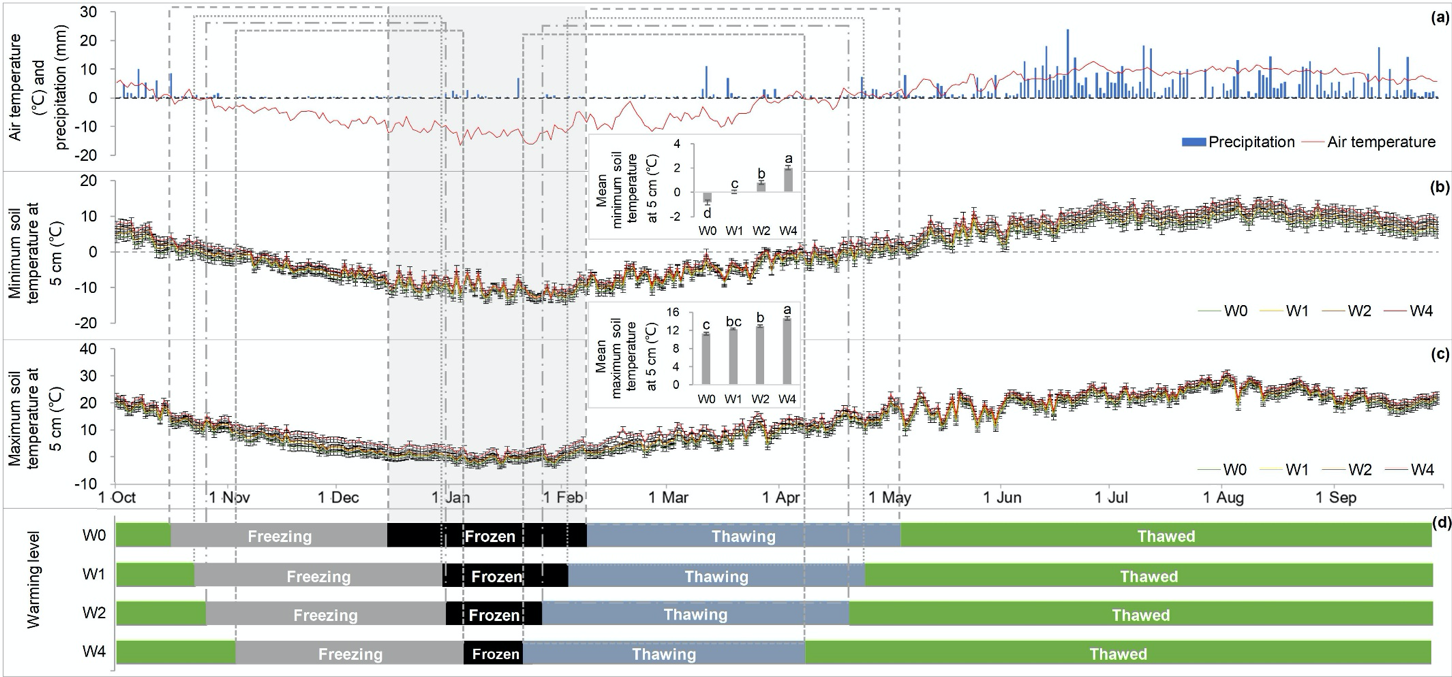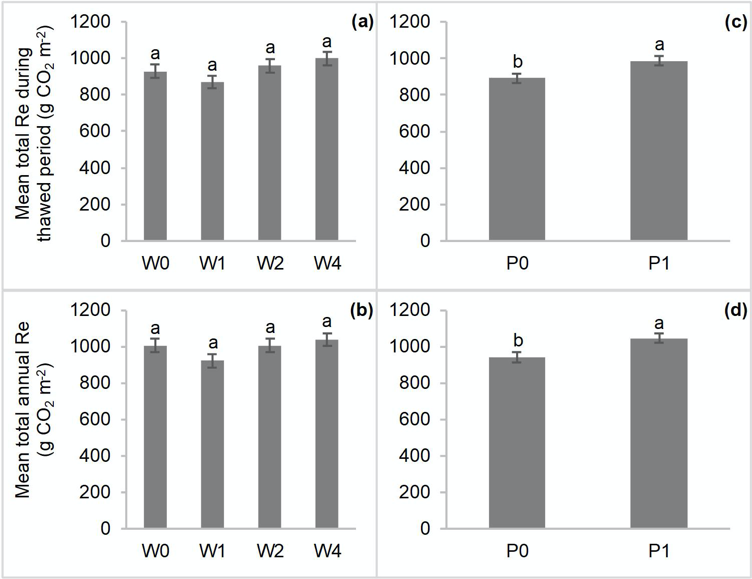Many researches reported that warming alters soil freeze-thaw (F-T) process during winter in cold regions, such as the start and end dates, frequency and intensity. The incubation of soil samples has proved that labile organic C is exposed during soil F-T periods, and carbon-rich permafrost is expected to release more CO2 to the atmosphere through ecosystem respiration (Re) under future climate scenarios, so it’s important to understand the mechanisms of the responses of F-T periods to climate change and their coupling with Re. However, most previous studies are from wet, ice-rich arctic soils. Compared to that, the Tibetan permafrost has a thin, ice-poor organic layer, which may increase thermal conduction from the air to the deep permafrost, and accounting for 75% of the total area of alpine permafrost in the Northern Hemisphere, so we expect a different response in the semi-arid alpine permafrost. In addition, the short-term soil incubation experiment may not represent field conditions, so it’s still unclear how changes in F-T period induced by soil warming affects ecosystem respiration.
Professor Shiping Wang’s group from CETES and Institute of Tibetan Plateau CAS used the two-year observation data of the warming (four levels) and precipitation addition platform in Naqu, try to examine how the discontinuous alpine permafrost whose underlying surface is semi-arid meadow will response to warming and precipitation addition, and how these changes will affect the annual ecosystem respiration.
They found that warming delayed the start and end dates of F-T events during the freezing period, and advanced them during the thawing period, thus shortening both the duration of the soil frozen period and the total duration of the F-T period from autumn to spring (Figure 1). Although warming decreased the accumulated CO2 during F-T period (Figure 2), the annual total ecosystem respiration did’t changed (Figure 3), as the reduced soil water content by warming and the small contribution of Re during the F-T period to the annual result. Although precipitation addition had no effects on F-T period, it increased the Re during F-T period and annually. This study provides direct in situ evidence that the effects of warming and precipitation addition on F-T events and annual Re may decouple, because ST mainly controls F-T events and SWC mainly controls Re, with no interactive effect. The contribution of changes in Re during F-T periods to changes in annual ecosystem release of CO2 could thus be overestimated under warming in semi-arid areas with discontinuous permafrost, such as the Tibetan Plateau. Better predictions of the influence of climate change on the release of ecosystem C from permafrost will require re-evaluating the effects of changes in precipitation and their interaction with warming on the cycling of ecosystem C in alpine regions around the world. In particular, the mechanisms of how warming reduces the mean Re rate without affecting ST or SWC during F-T periods in situ remain unclear.
This work was supported by projects from the National Natural Science Foundation of China (41731175 and 41988101), Strategic Priority Research Program A of the Chinese Academy of Sciences (XDA20050101 and XDA2005010405), National Key Research and Development Program of China (2016YFC0501802) and National Natural Science Foundation of China (31672470).
Article information:Wang, Q., Lv, W., Li, B., Zhou, Y., … Shiping Wang*., 2019. Annual ecosystem respiration is resistant to changes in freeze‐thaw periods in semi‐arid permafrost. Global Change Biology. https://doi.org/10.1111/gcb.14979
Full-text link:https://onlinelibrary.wiley.com/doi/10.1111/gcb.14979

Figure1 Warming shifts in the soil freeze-thaw (F-T) periods

Figure2 Mean total ecosystem respiration (Re) during the different freeze-thaw periods

Figure3 Mean total ecosystem respiration (Re) during the thawed period and annually


